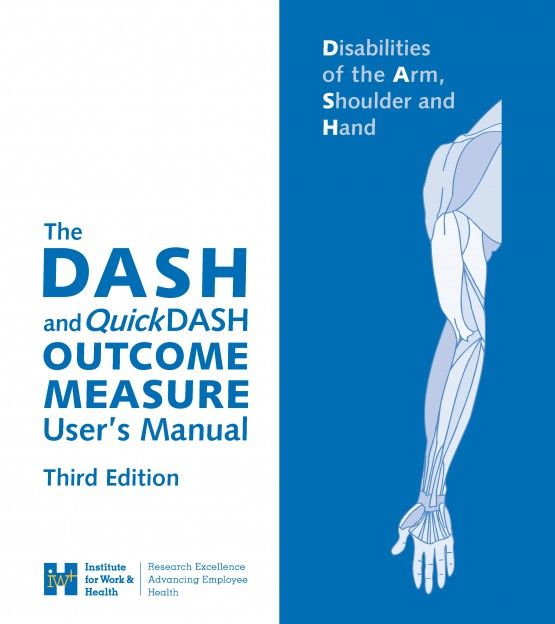The DASH (Disabilities of the Arm, Shoulder and Hand) Outcome Measure is a 30-item, self-report questionnaire that measures physical function and symptoms in people with musculoskeletal disorders of the upper limb. Developed by the Institute for Work & Health and the American Academy of Orthopedic Surgeons, the questionnaire helps describe the disability experienced by people with upper-limb disorders and also helps monitor changes in symptoms and function over time.
A shorter 11-item version, called the QuickDASH, is also available.
Both versions come with two optional modules intended to measure symptoms and function in athletes, performing artists and other workers whose jobs require a high degree of physical performance. These optional models are scored separately.
Both versions are available as downloads and as an app for the iPad. Both versions for download are available in more than 50 languages and dialects.
Who should use the measure
The DASH Outcome Measure and QuickDASH give clinicians and researchers a single, reliable instrument to assess function and symptoms in any or all joints in the upper extremity.
Both tools are valid, reliable and responsive and can be used for clinical and/or research purposes. However, because the full DASH Outcome Measure provides greater precision, it may be the best choice for clinicians who wish to monitor arm pain and function in individual patients.
The DASH Outcome Measure and QuickDASH, as well as a user’s manual, scoring instructions, frequently asked questions and research updates, are available from the DASH website.
